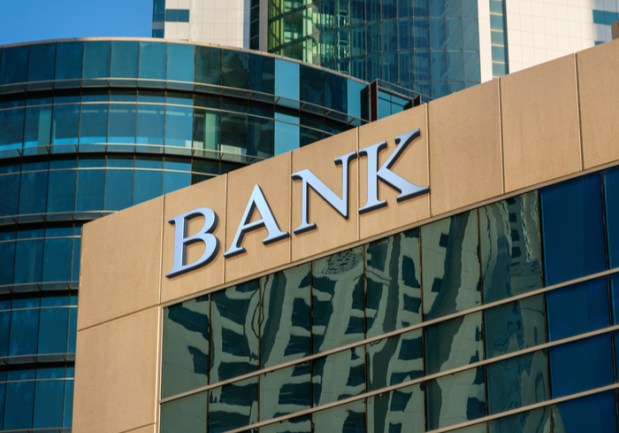Lending Is Failing To Live Up To 2018’s Great Expectations

It was supposed to be a strong year for lending across the board, after a stumpy 2017, which saw numbers in both consumer and commercial lending tending toward a slump.
As of early 2018, U.S. regional bank executives were gearing up for a bumper year, according to Bloomberg. Crediting lower taxes, thanks to the end of the year tax reform bill passed by Congress, regional bank executives saw a sudden and notable pick up in both commercial loan demand and a big jump in spending on credit and debit cards. At the time, that pick up in interest from both businesses and consumers, paired with an increase in interest rates, looked very encouraging to lenders.
Many even raised their loan growth and profit outlooks for the coming year.
“It was almost like a dam broke when the tax legislation got enacted,” said Steve Steinour, CEO of Huntington Bancshares Inc. “We had a massive amount of activity in those final three weeks of the year.”
Others, like KeyCorp CEO Beth Mooney noted that the business environment had finally become “constructive” after a few years of lagging in that regard, which, in turn, has finally boosted enough confidence for small businesses and large enterprises to really begin investing in expansion.
“You’re going to see more willingness on the part of companies and small businesses to invest more, and, as they invest, there will be tax advantages to doing it with debt,” she noted.
And, while larger lenders forecasted that larger enterprises may shy away from borrowing for the time being, middle market firms — the bread and butter of regional banks — were looking like incredibly strong candidates for an uptick in borrowing.
“Small retailers, manufacturers and distributors — they have, frankly, struggled over the last 10 years as the economy has been driven more by the largest businesses,” Kelly King, CEO of BB&T said in a Jan. 19 interview with Bloomberg Television. “Now that’s reversing and we’re going to see Main Street come alive.” BB&T is expecting to see loan growth between 2 to 4 percent in 2018.
Meanwhile on the consumer side, good things were also forecast, particularly in terms of growing into new areas. Citizens Bank, a regional player based in Rhode Island, for example, was looking for growth in its newest underwriting area — student loan refinancing.
“There’s still certainly room to grow in terms of having high-quality student borrowers who have graduated school, have good credit ratings, and are paying too much for their student debt,” Citizens’ CEO Bruce Van Saun said in a telephone interview to Bloomberg. “I’m quite confident that we’ll continue to see good growth on the consumer side.”
Some regional banks, however, are using the extra influx of cash from lower tax rates as an opportunity to boost their offerings to consumers with upgrades, thereby driving more future traffic. U.S. Bancorp, the largest regional bank in the U.S., said it plans to invest roughly 25 percent of the savings back into the business. Specifically, the firm will focus on dual-language offerings for mobile and web applications, as well as automating risk-management and loan-origination processes.
“It takes four days to make a loan,” Terry Dolan, chief financial officer at U.S. Bancorp said. “Through automation, we want to be able to do that in four minutes.”
A bold change.
Early 2018 seemed to be the time for high hopes — and big expectations. The tax cut had done what it was intended to do: boost economic activity.
At least it looked promising, anyway. By the halfway mark, things are looking a bit less buoyant. According to The Wall Street Journal, what looked to be rebounding loan growth at the beginning of the year appears to be fizzling out, particularly at small and medium-sized banks.
Weak loan growth, notably, has been epidemic over the last few years, and has been referred to by some economists as “one of the mysteries of the economic recovery in the past two years.”
Loan growth did show signs of rebounding earlier in the year — hence the mass outpouring of enthusiasm above — but by the actual numbers overall, it was pretty modest, topping out at a little over 5 percent. Commercial and industrial loans were ever so slightly stronger looking, with growth that peaked at 6.5 percent. That’s better than it was in 2017, when it didn’t clear 5 percent, but still well below the double-digit increases that were on display a few years ago according to The Journal.
And, as 2018 is heading toward its back half, those figures are actually dipping a bit lower, not gaining strength. Commercial and industrial loans were up 5.7 percent year-over-year as of the second week of August, and total lending is up 4.7 percent since this time last year.
It is not what Wall Street was hoping to see out of the market.
“For a while now we’ve been waiting for loan growth improvement, and it’s been slow,” said Barclays analyst Jason Goldberg. Goldberg noted that continued uncertainty over trade policy and higher interest rates were two culprits holding back more activity.
The more sluggish than expected 2018 performance might actually shape up into an issue for smaller regional banks, which were apparently counting on a strong year in lending growth to boost their annual performances. Morgan Stanley analysts, in a note, observed that 13 of the 28 “midcap” banks they cover need to see a loan growth acceleration in the second half to meet their own full-year guidance.
Of course, it’s not impossible that they will. Loan rates seem to be decelerating, but there are still 5 months of 2018 to go — and the backend of any year is usually pretty eventful.
